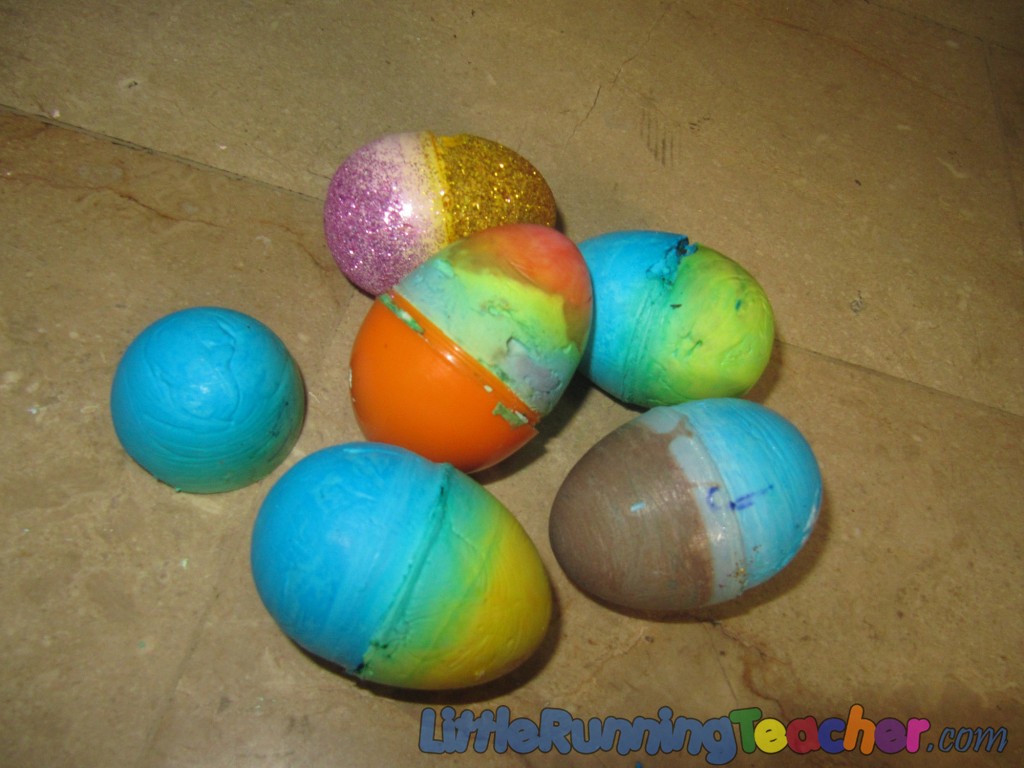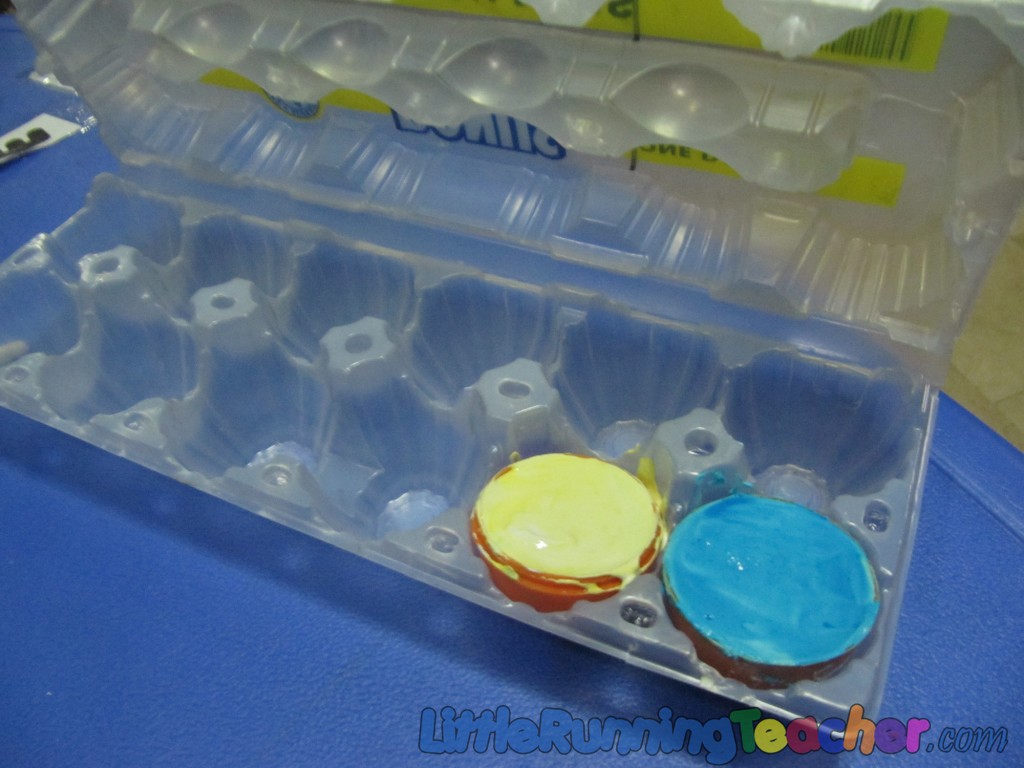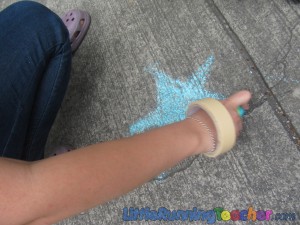As a kid, I always had so much fun drawing on pavement. I don’t know why but it’s probably because of the unique texture of the pavement and the excitement of writing and drawing on something else other than paper. I also liked the chalk itself because of the same reason –> drawing and coloring using something else other than pencils and crayons.
–
While browsing for some unique activities for the Easter season, I came across this egg-shaped sidewalk chalk making activity from Oodlekadoodleprimitives. It was love at first sight! Not only will the kids have fun drawing outdoors, but they get to make the chalk themselves… AND in a unique egg shape too! What’s there not to like about it? I just had to try it!
–
- Petroleum Jelly
- Plaster of Paris
- Water
- Food Coloring / Tempera Paint
- Disposable cups and spoons
- Plastic Eggs
- Egg carton
- Tissue paper or cloth to wipe
–
–
Step 1: Open the plastic eggs and coat the insides with petroleum jelly. This is to prevent the plaster of paris from sticking to the egg later on. Close it afterward and leave it for a while.
–
–
Step 2: Mix the plaster of paris, water and food coloring in one container. The right mixture would be 1/4 cup water and 1/2 cup Plaster of Paris. Just a teaspoon of food coloring or tempera paint will do (depending on how dark you want the color to be)
*You may also choose to use 2 colors for one egg, in that case, just make another mixture of another color in another cup
–
Step 3: Place the mixture into each side of the plastic egg. Make sure to feel each half to the top. You wouldn’t want to be left with a hallow egg now would you?
–
Step 4: Leave the eggs open for about 5 minutes just to dry the mixture a bit. Don’t forget to close it before it hardens all the way, but DON’T close it shut so it’ll be easy to open later on.
–
Step 5: I read somewhere to leave it overnight, but it’s actually ready to use after an hour or so. You can leave it longer to be sure though. But once it’s ready, twist the plastic eggs until it comes off and wipe the hardened plaster with a tissue (to remove the petroleum jelly) then go outside and have fun drawing and writing on the streets! :)
What I loved about these is that unlike the regular chalk, there isn’t much chalk dust that flies around when you write. Hence it is safe for kids.
–
–
** I also tried experimenting with glitter powder! I had to put a lot of glitter though! It turned out really nice and the kids loved how it looked! However, there wasn’t much effect when writing/drawing on the pavement. The glitter powder wasn’t seen as much. I then tried making a RAINBOW-COLORED EGG CHALK, instead of just mixing two colors, I made mixture of 5 colors. I then put a scoop of each color into the opened plastic egg and created my own rainbow egg! :D I loved this the most!
–
–
DO A SCIENCE EXPERIMENT: While the plaster hardens, you can let the kids feel the plastic egg heat up as well because of the process. According to the internet, this is why it heats up.
–
“To make plaster of paris, the gypsum is ground up and heated at 190-200°C until about three-fourths of the water evaporates. The resulting material is then powdered and packaged. When water is added to the plaster of paris, the gypsum molecules absorb the water and recrystallize, and the material hardens or “sets.” Because it absorbs the water as part of its crystal structure, the plaster of paris doesn’t “dry out,” and thus still hardens underwater. As the crystals reform, heat is given off.”

























